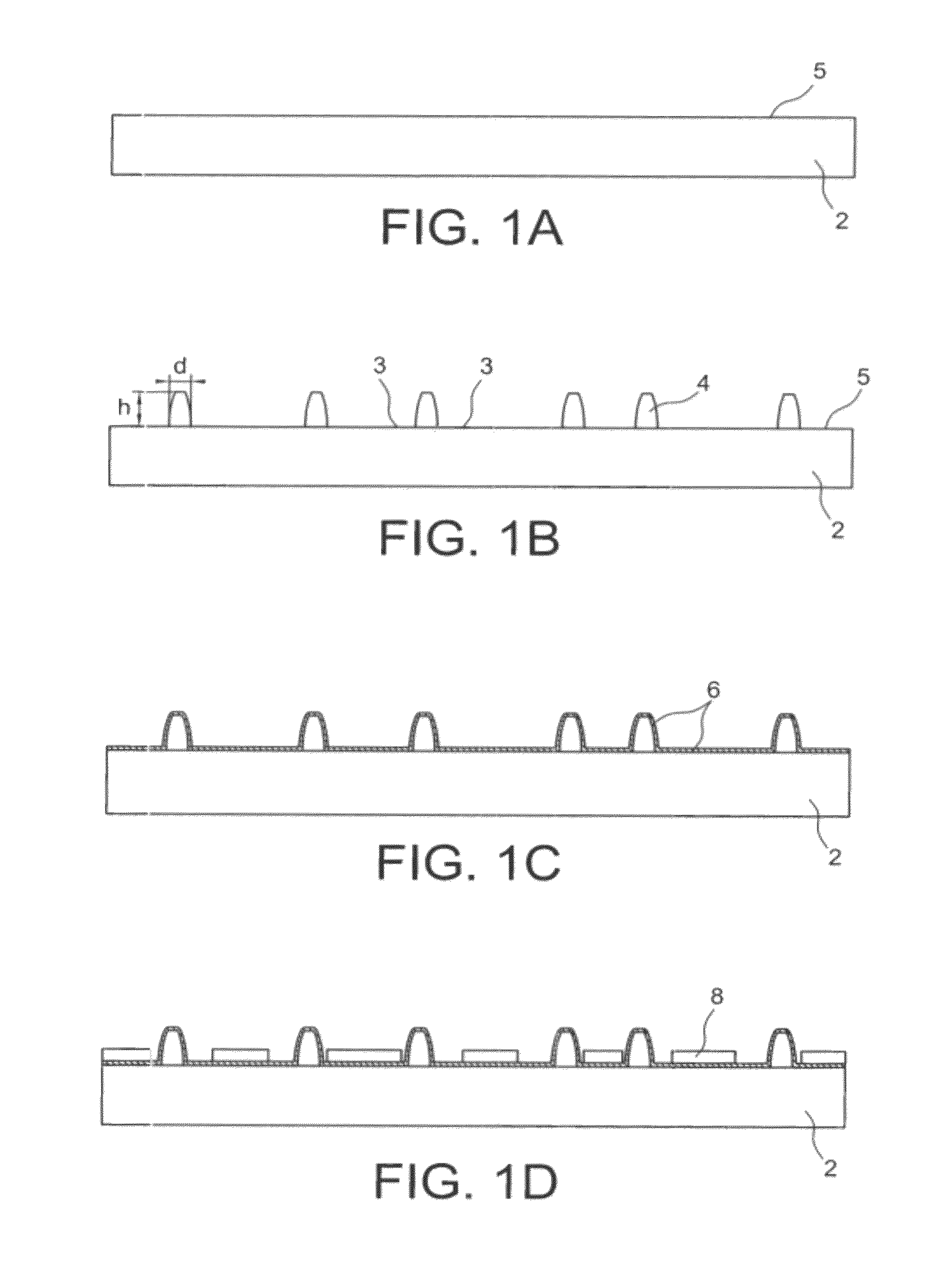Method of producing a via in a reconstituted substrate
a substrate and via technology, applied in the field of component integration, can solve the problems of end-of-method testability, difficulty in re-filling, or plugging, and above-mentioned techniques not being able to be don
- Summary
- Abstract
- Description
- Claims
- Application Information
AI Technical Summary
Benefits of technology
Problems solved by technology
Method used
Image
Examples
first embodiment
[0051]FIGS. 1A-1J represent a method according to the invention.
second embodiment
[0052]FIGS. 2A-2I represent a method according to the invention.
[0053]FIG. 3 presents examples of polymer pins that may be used within the scope of the present invention.
[0054]FIGS. 4 and 5A-5C represent devices obtained by a method according to the invention.
[0055]FIGS. 6A-6C schematically represent various layout examples of a component and vias near to this component.
[0056]FIGS. 7 and 8 represent assemblies of devices obtained by a method according to the invention.
[0057]FIGS. 9, 10, 11A and 11B represent structures known from the prior art.
PUM
 Login to View More
Login to View More Abstract
Description
Claims
Application Information
 Login to View More
Login to View More - R&D
- Intellectual Property
- Life Sciences
- Materials
- Tech Scout
- Unparalleled Data Quality
- Higher Quality Content
- 60% Fewer Hallucinations
Browse by: Latest US Patents, China's latest patents, Technical Efficacy Thesaurus, Application Domain, Technology Topic, Popular Technical Reports.
© 2025 PatSnap. All rights reserved.Legal|Privacy policy|Modern Slavery Act Transparency Statement|Sitemap|About US| Contact US: help@patsnap.com



